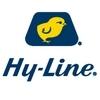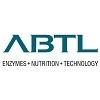Check out what is new in Poultry Industry
Find the best technical articles, forums, and videos on Poultry Industry at Engormix. Enter now and interact with the world's largest agricultural social network.
DESCRIPTION OF PROBLEM There are growing concerns that the continual feeding of inorganic P is leading to the development of eutrophication of surface waters. Excessive P runoff from soil causes an accumulation of P in water sources, and this can result in toxic algal blooms and fish kills [1]. The availability of P from feedstuffs of plant origin is low for poultry because a greater proportion of the total P is present in the phytate form, a form that has low availability...
Comments : 0
Recommendations: 0
.mp4&w=3840&q=75)
Join Carlton and Clint for a brief discussion around Myco 5-in-1 PLUS - VICAM's answer to global grain and feed producers and handlers who are impacted by the need to monitor more than one mycotoxin in a non-laboratory testing environment. Then, watch the procedure from start to finish ...
Comments : 0
Recommendations: 1
Background: FAdVs are widely distributed, and some species are associated with important poultry diseases, representing current threats of serious economic losses for the aviculture industry. Some of the diseases include the Inclusion body hepatitis (IBH) related with FAdV-C and D infections, hepatitis-hydropericardium syndrome (HHS) related with FAdV-C infections [1,2], gizzard erosion (GE) related with FAdV-A infections [3-6] among others. The family Adenoviridae is divided...
Comments : 0
Recommendations: 0
INTRODUCTION Vitamin D is a group of closely related compounds that have antirachitic activity. It has been estimated that nearly 50% of the United States population is at risk for vitamin D deficiency or insufficiency (Holick et al., 2011). Vitamin D 3 (D 3 ) deficiency can cause rickets in young children or increase the risk of osteoporosis and osteomalacia in adults (Holick, 2005). One approach to increase D 3 intake in a population without...
Comments : 0
Recommendations: 1
INTRODUCTION Salmonella is an important pathogen transmitted through food, water or direct contact with animals. Recently, it was estimated that this pathogen causes more than 20 million disease episodes and 144,000 worldwide deaths annually. 1 In order to prevent infections, veterinary and human health laboratories have stablished national Salmonella surveillance programs oriented to monitor prevalence, distribution and antibiotic resistance profiles of this...
Comments : 0
Recommendations: 0
INTRODUCTION In poultry, phosphorus (P) is an essential nutrient in metabolic processes and a component of nucleic acids, membrane phospholipids, and bones (Nie et al., 2013). Much effort has been made to increase P absorption in poultry to improve metabolic performance and reduce the environmental impact of phosphate (Pi) release from manure (Ahmadi and Rodehutscord, 2012; Letourneau-Montminy et al., 2013). Dietary P is absorbed in the small intestine by both passive and...
Comments : 0
Recommendations: 0
Introduction The world economy is experiencing an exceptionally strong but highly uneven recovery. Global growth is set to reach 5.6 % in 2021- its strongest post-recession pace in 80 yearsin part underpinned by steady but highly unequal vaccine access. Growth is concentrated in a few major economies, with most emerging market and developing economies (EMDEs) lagging: while about 90% of advanced economies are expected to regain their pre-pandemic per capita income levels by...
Comments : 0
Recommendations: 1
1. Background Salmonella is an important pathogen transmitted through food, water or direct contact with animals. Most Salmonella surveillance programs rely on polymerase chain reaction (PCR)-based assays for rapid and accurate detection (1, 2). Among these molecular tools, the invA-PCR assay has been accepted as the conventional method for Salmonella detection (2-4). This PCR protocol amplifies a fragment of the invA gene, a Salmonella-specific locus (5, 6) proposed as an...
Comments : 0
Recommendations: 0


Innovative Directions in Aflatoxin Testing Point to Measureable Gains in Quality Of Lab Data
Suggested link
1. Introduction Salmonella is one of the most common foodborne pathogens. The intestinal tract of poultry and other food animals is considered the main foodborne Salmonella reservoir [1,2]. An increasing incidence of antimicrobial resistance (AMR) has been reported in poultry Salmonella isolates where antibiotics are extensively used in production systems [3,4]. Although the link between antimicrobial usage in food animals and clinical treatment failures in human salmonellosis...
Comments : 0
Recommendations: 0
INTRODUCTION Antimicrobial resistance is a major threat to human health (1). Host-directed therapy has emerged as a promising antibiotic-free strategy for disease control and prevention (2, 3). Host defense peptides (HDPs), also known as antimicrobial peptides, are small molecules of the innate immune system featuring antimicrobial and immunomodulatory properties (4, 5). Inducing HDP synthesis is a host-directed antimicrobial therapy that is being actively explored for human and...
Comments : 0
Recommendations: 0
.jpg&w=3840&q=75)

40 Years of Success in China with Hy-Line (Mandarin-language video)
Suggested link
The villi of the intestinal mucosa are lined by a single layer of columnar cells, comprising enterocytes, goblet and enteroendocrine cells, and various types of immune cells, each with a distinct function. Chicken gut mucosa is exposed to an enormous number of feed antigens, and pathogenic bacteria that often impair the intestinal barrier function. Ultrastructural examination of enterocytes, their organelles and other features, such as mitochondria, microvilli, and tight junctions sealing...
Comments : 1
Recommendations: 0
The gastro-intestinal tract (GIT) of poultry has a complex and dynamic microbial community consisting primarily of bacteria whose cell wall contains the structural polymer peptidoglycans (PGNs). Bacterial cell wall recycling is a process whereby bacteria degrade their own wall during growth in order to recover released constituents by active transport. These nutrients are then reutilized to either rebuild the wall or to gain energy (Mayer, 2012). However, in both normal and a challenged GI...
Comments : 2
Recommendations: 2
I. INTRODUCTION Kappaphycus alvarezii (KPA) is a red alga that is also called Eucheuma cottonii . Seaweeds have received significant attention for their potential as sources of natural antioxidants attributed to the carotenoids, tocopherols and polyphenols present which contribute to inhibition or suppression of free radical generation (Athukorala et al. 2006). Kappaphycus alvarezii is rich in enzymes, nutrients, minerals, calcium, iron, fibres...
Comments : 0
Recommendations: 0
Coccidiosis is an important health problem in broilers, caused by infection with a highly contagious intestinal parasite of the genus Eimeria. Anti-coccidial drugs are widely used for the prevention of coccidiosis in broilers. However, multi-resistance coccidia is a potential threat to poultry production. Solid-state fermented products produced from B. licheniformis not only contain B. licheniformis spores but also have B. licheniformis derived...
Comments : 7
Recommendations: 2
.jpg&w=3840&q=75)

Guanidinoacetic Acid (GAA): Boosting Broiler Growth and Feed Efficiency
Suggested link
I. INTRODUCTION Throughout the world, poultry are a major and growing source of high-quality protein, as they outperform all other terrestrial meat production systems in water, feed, carbon, and land use efficiency. A challenge for intensive production systems has been the potential to introduce high pathogen loads and stresses on the animals. Such challenges have traditionally been managed with the assistance of antibacterial growth promoters. However, the poultry...
Comments : 0
Recommendations: 0
I. INTRODUCTION The rise in incidence of myopathies in young broilers over the past few years has resulted in the industry looking for solutions to reduce and/or eliminate their effects in the poultry flock. The main three myopathies of concern are the so-called white striping (WS - parallel white stripes on the surface of the broiler’s pectoralis muscle), woody breast (WB - accumulation of connective tissue fibres and fat cells in the inner...
Comments : 0
Recommendations: 0
Starch is the most abundant source of energy in broiler diets, providing about 50 % of apparent metabolisable energy. Broiler diets generally contain approximately 40 % starch, which is thought to be completely digested within the small intestine. However, the microbiota in the large intestine also plays an important role in starch digestion, producing volatile fatty acids that act as an energy source. The potential consequence of this is an incorrect prediction of the digestible energy...
Comments : 0
Recommendations: 1
I. INTRODUCTION Globally, maize and wheat are the major cereal grains used in broiler feed. Maize is predominant in Asia and the Americas, whereas wheat is in Australia, New Zealand and Europe. Extensive research has been undertaken in refining dietary strategies to optimise broiler performance when offered reduced crude protein (CP) diets. In feed, these grains have been optimized by the inclusion of feed enzymes and unbound (crystalline or synthetic) amino acids. Reduced CP...
Comments : 1
Recommendations: 0
...
Comments : 0
Recommendations: 0
AMES, Iowa — Researchers in the Department of Food Science and Human Nutrition at Iowa State University have discovered an innovative approach to fight bacteria and their antimicrobial resistance in poultry by exploiting linkages between the gut neurochemical and immune systems.
Poultry products are the primary vehicle for exposure to the foodborne disease, Salmonella, in the United States. More than 1 million infections represent approximately $400 million in costs each year....
Comments : 1
Recommendations: 2


.jpg&w=3840&q=75)






























